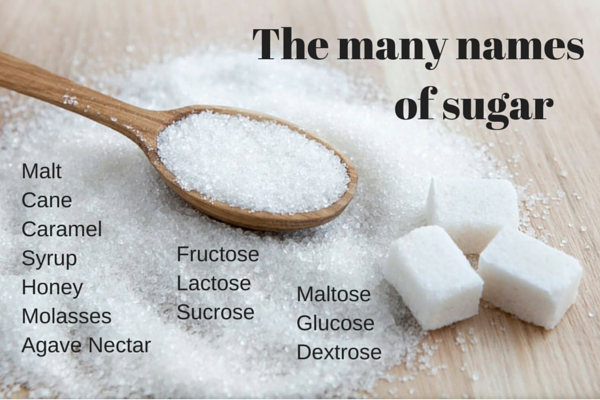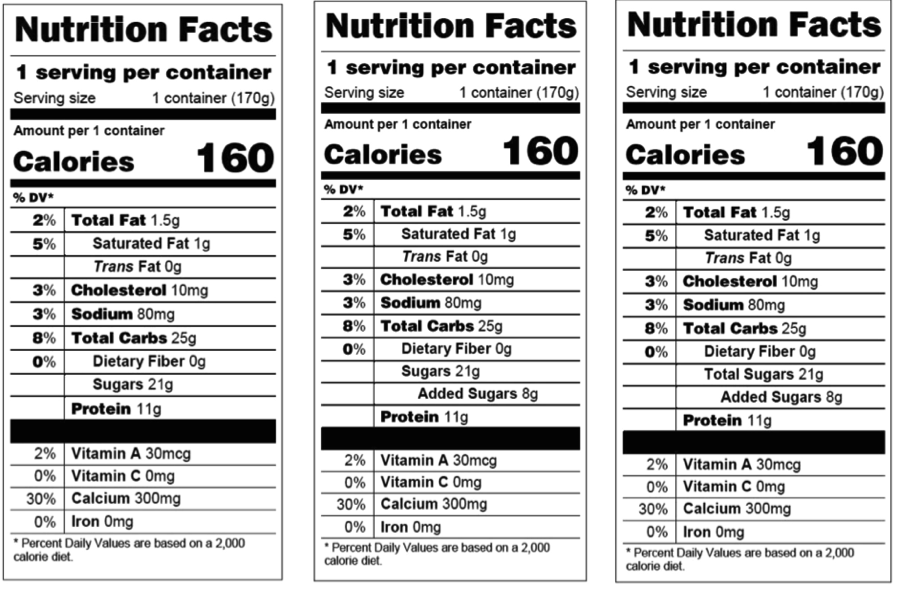The FDA wants to require listing the amount of “Added Sugars” on the new version of the Nutrition Facts label. We wrote about this and the FDA’s other proposed changes here. But will this change make it easier to make healthy choices or just cause further confusion?
A new study published in the Journal of the Academy of Nutrition and Dietetics attempts to find out how consumers interpret “Added Sugars” on proposed versions of the Nutrition Facts label. AICR recommends limiting processed foods high in added sugar because these foods are energy-dense and can make it more difficult to maintain a healthy weight. Excess weight gain is a cause of ten cancers.
 The study included a qualitative interview phase and a quantitative phase, which surveyed a nationally representative sample of 1,088 adults.
The study included a qualitative interview phase and a quantitative phase, which surveyed a nationally representative sample of 1,088 adults.
In the qualitative phase, the authors showed participants both the current and proposed versions of the Nutrition Facts label. They found that many people misinterpreted the meaning of “Added Sugars” on the proposed label; for example, many people thought that the food contained both the listed grams of added sugars along with the listed grams of sugars. In fact, the grams of “Sugars” include both added sugars and the sugars that occur naturally in fruits, vegetables, and dairy products.
In the survey portion of the study, respondents viewed— in different orders — three versions of a Nutrition Facts label representing the same product.
 They were then asked to identify how many grams of total sugar were in the product. Respondents who saw the version of the Nutrition Facts label without “Added Sugars” first were most likely to correctly identify the grams of total sugar in the product.
They were then asked to identify how many grams of total sugar were in the product. Respondents who saw the version of the Nutrition Facts label without “Added Sugars” first were most likely to correctly identify the grams of total sugar in the product.
When asked specifically whether added sugars were in addition to or included in the product’s total sugar, 52% of those who saw the version listing both “Sugars” and “Added Sugars” and 33% of those who saw the version listing both “Total Sugars” and “Added Sugars” answered incorrectly.
And about three of every four participants said they would most likely buy the product that did not include “Added Sugars” on the label
These results suggest that consumers who haven’t seen the revamped Nutrition Facts label before struggle to understand how “Added Sugars” figure into the total sugars in a product. Using the term “Total Sugars” instead of merely “Sugars” may also be clearer.
To make the most of this change, it’s important to educate yourself about the meaning of added sugars and how to read the new label.
Even if the additional information may makes the label a bit more complicated for some to understand at first, including “Added Sugars” on the label can help you eat healthier. While added sugars aren’t any different than sugars that occur naturally in fruits, vegetables, and dairy products, foods that contain added sugars are often higher in calories and lower in beneficial nutrients compared to foods with naturally occurring sugars.
For example, added sugar in flavored yogurt provides extra calories, but no extra nutrition. If you flavor plain yogurt with fresh berries instead, the berries add a few extra calories, but also provide fiber, vitamins, and phytochemicals that may help prevent cancer.
While we wait for the FDA to make a final decision about whether “Added Sugars” will be listed on the Nutrition Facts label, you can take action to limit your intake of added sugars by reading the ingredient list on packaged foods. If sugar – or another name for sugar – is listed near the beginning of the ingredient list, choose smaller portions of that food less often.
This research was commissioned and funded by the International Food Information Council Foundation.





